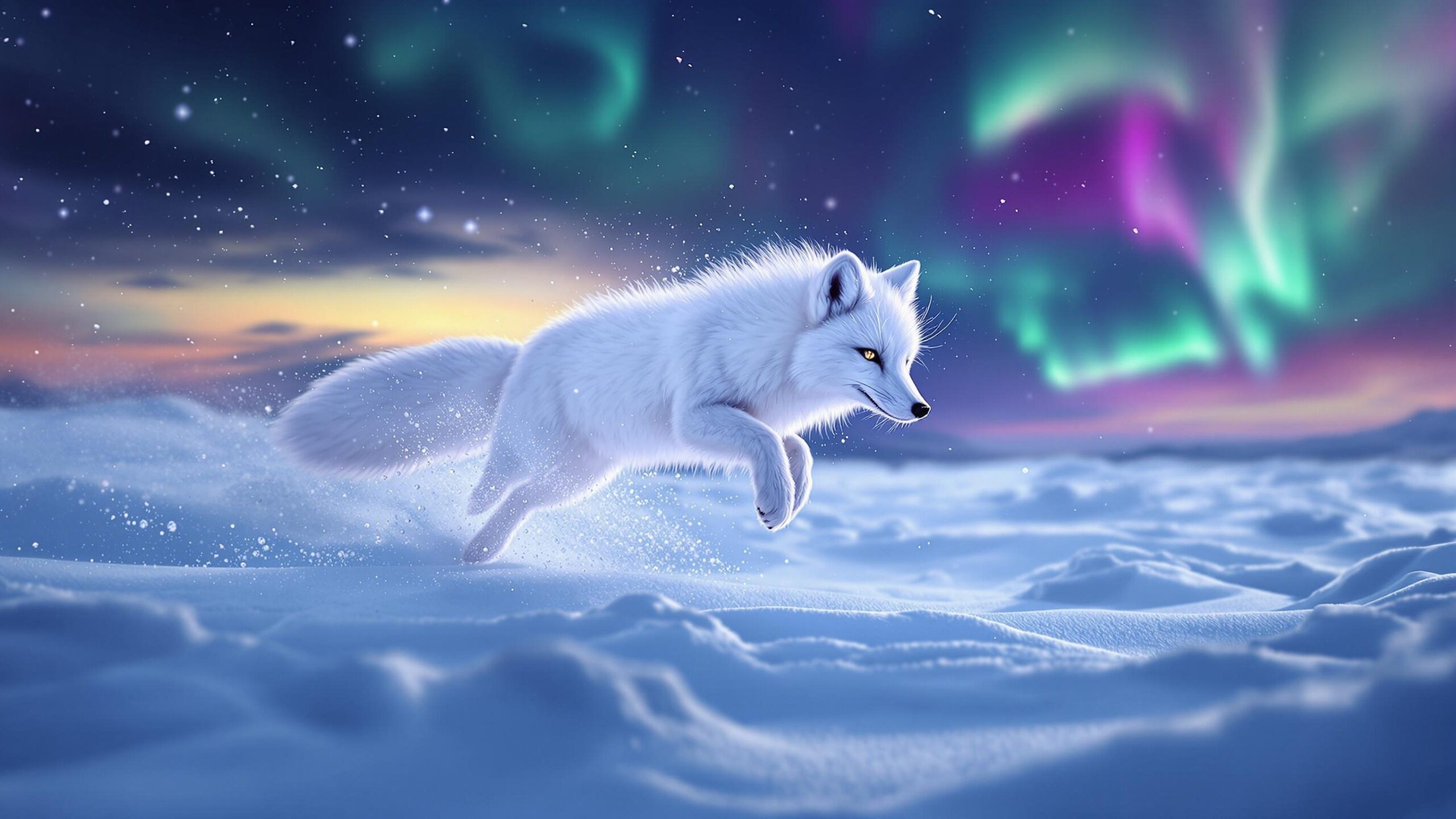Foxes: The Clever Shadows of the Wild That Dance Between Worlds
At twilight, when the sky softens and the forest hushes, a flicker of red moves between the trees. It pauses—ears twitching, eyes gleaming, and then vanishes like a wisp of smoke. This fleeting presence is the fox: clever, quiet, and endlessly adaptable. Known as tricksters in myth, survivors in nature, and icons in human culture, foxes embody a unique balance of cunning and curiosity, solitude and strategy. Whether slinking through Arctic snowdrifts, trotting along suburban fences, or basking under desert moons, foxes remind us that wildness often hides in plain sight.
Foxes belong to the family Canidae, which includes wolves, coyotes, jackals, and domestic dogs. Unlike their larger cousins, foxes are generally small, solitary, and stealthy. They’ve evolved in nearly every type of habitat on Earth—from icy tundras to steamy rainforests—and in doing so, have become one of the most widespread and resilient carnivores. To understand foxes is to explore a wide tapestry of species, behaviors, and ecological roles that stretch across continents and centuries.
The Anatomy of Adaptability: Biological Traits of the Fox
Most fox species share similar physical traits: slim bodies, long legs, bushy tails (often called “brushes”), narrow muzzles, and upright, sensitive ears. Their size ranges from the tiny fennec fox, weighing under 4 pounds, to the larger red fox, which can reach up to 30 pounds. What all foxes possess, however, is adaptability. Their senses are finely tuned—acute hearing allows them to detect the faint rustle of a mouse beneath the snow, while their night vision rivals that of owls.
Foxes are omnivorous, eating everything from small mammals, birds, and insects to fruits, berries, eggs, and carrion. This dietary flexibility allows them to survive in a wide range of environments, including those altered by humans. They are also renowned for their resourcefulness. Foxes cache food, modify dens, change hunting techniques based on prey behavior, and even learn to navigate urban landscapes with uncanny intelligence.
Socially, most foxes are solitary hunters, but they live complex lives. They communicate through a range of vocalizations—from yips and barks to eerie screams—and use scent marking to establish territory. During mating season, pairs may form long-term bonds, and parents share in raising pups. It’s this blend of independence and intimacy that gives foxes their air of mystery.
The Red Fox: The Ubiquitous Shadow of Forest and Field
The red fox (Vulpes vulpes) is the most widespread and well-known fox species, found across North America, Europe, Asia, and even parts of North Africa and Australia (where it was introduced). With its iconic orange-red coat, white underbelly, and black legs, the red fox is instantly recognizable. But it’s not just beauty that defines it—it’s brains. Red foxes thrive in diverse habitats including woodlands, mountains, farmlands, and cities. They are equally comfortable raiding a chicken coop as they are catching mice in a snowy meadow. Urban red foxes in places like London, Toronto, and Tokyo have been observed crossing roads at crosswalks, scavenging in dumpsters, and even sunbathing in backyards.
They are highly vocal, with more than 20 recognized sounds used for communication. During breeding season, the sharp bark of a male and the shriek-like scream of a vixen pierce the night. Red foxes typically raise litters of 4 to 6 kits, with both parents and sometimes older siblings contributing to care and teaching. These kits play, wrestle, and mimic hunting—learning the skills that will one day ensure their own survival.
The Arctic Fox: Master of Ice and Survival
In the frozen reaches of the Arctic, where temperatures plummet below -50 degrees Fahrenheit, the Arctic fox (Vulpes lagopus) survives through insulation, endurance, and ingenuity. With its thick white winter coat that changes to brown or gray in summer, it is perfectly camouflaged for a world of snow and stone. Arctic foxes are built for cold: compact bodies, small ears, and dense fur minimize heat loss. Their furry paws act like snowshoes, and their incredible hearing helps them detect lemmings moving beneath thick ice. When prey is scarce, they follow polar bears to scavenge leftovers, or hunt sea birds, fish, and even insects.
In summer, Arctic foxes raise their young in large underground dens, sometimes inherited and expanded over generations. Litters can be as large as 14 pups—nature’s way of ensuring some survive in a harsh environment. These foxes also exhibit nomadic behavior, traveling vast distances across ice and tundra to follow food sources, making them some of the most wide-ranging animals on the planet.
The Fennec Fox: Desert Sprite with Enormous Ears
From the icy north to the hot sands of the Sahara, the fennec fox (Vulpes zerda) reigns as the smallest fox in the world—and perhaps the most adorable. Weighing under 4 pounds, the fennec fox is dwarfed by its signature feature: oversized ears that radiate heat and detect the faintest desert noises. Fennec foxes are marvels of desert adaptation. They burrow deep into sand dunes to escape daytime heat and emerge at night to hunt insects, rodents, birds, and fruit. Their kidneys conserve water efficiently, allowing them to live with minimal hydration. Their creamy coats reflect sunlight and insulate against cold desert nights.
Living in small family groups, fennec foxes are more social than many of their kin. They use squeaks, growls, and purr-like noises to communicate, and their playful behavior is endearing to both humans and other foxes. Their graceful, cat-like movement across the dunes adds to their mythic aura—a creature seemingly sculpted from the desert wind.
The Gray Fox: Tree-Climbing Trickster of the Americas
The gray fox (Urocyon cinereoargenteus) is one of the few canids capable of climbing trees—an adaptation that sets it apart in both behavior and habitat. Found throughout North and Central America, the gray fox is more reclusive than the red fox, preferring dense forests, scrublands, and brushy woodlands.
Its salt-and-pepper coat, black-tipped tail, and russet sides give it excellent camouflage among leaves and bark. When threatened, it will not only flee but climb into branches to rest or escape predators. This arboreal habit allows gray foxes to hunt squirrels and birds in trees, giving them a dietary niche that reduces competition with ground-based predators. Gray foxes are mostly nocturnal and highly territorial. They are monogamous and raise pups in tree hollows, dens, or rocky crevices. Unlike the showier red fox, gray foxes are subtle and quiet—more a whisper than a shout in the forest, but no less essential to the balance of their ecosystems.
The Kit and Swift Foxes: Tiny Nomads of the North American Plains
In the open prairies and deserts of western North America, two small fox species—the kit fox (Vulpes macrotis) and the swift fox (Vulpes velox)—make their homes in wind-swept grasslands and sandy scrub. These foxes are similar in size and behavior, with tan or buff-colored coats and large ears that help with thermoregulation and prey detection. Both species are adapted to arid environments. They dig extensive burrow systems to avoid the daytime heat and emerge at dusk to hunt insects, rodents, and reptiles. Kit and swift foxes are agile and alert, relying on speed and low visibility to escape threats. Their populations have declined due to habitat loss and fragmentation, especially in agricultural areas, but conservation efforts have helped some groups rebound.
Swift foxes in particular were once nearly wiped out in parts of Canada and the U.S., but reintroduction programs have seen encouraging success. These foxes may be small, but their role as rodent controllers and ecosystem indicators makes them vital components of prairie biodiversity.
The Bengal Fox: Subcontinental Spirit of the Indian Plains
Roaming the grasslands, scrub forests, and agricultural edges of the Indian subcontinent is the Bengal fox (Vulpes bengalensis), a lithe and graceful creature with a narrow snout and a prominent bushy tail. Unlike its red or Arctic cousins, the Bengal fox is more localized, and its behavior reflects a deep adaptation to the monsoon-driven rhythms of South Asia.
These foxes are primarily crepuscular, active at dawn and dusk, when temperatures are manageable and prey is abundant. They feed on a mix of insects, fruits, reptiles, and small mammals, and they’re often seen trotting across open ground with tails held high in a characteristic arc.
Bengal foxes often live in pairs or small family groups and use complex burrow systems for shelter and breeding. As India’s rural and suburban spaces expand, Bengal foxes are increasingly adapting to edge environments, though they face growing pressures from habitat loss, hunting, and competition with feral dogs.
Island Mysteries and Other Unique Foxes
Beyond the major fox species, several unique island and regional foxes deserve mention. The Darwin’s fox (Lycalopex fulvipes) of Chile is one of the rarest canids in the world, found only on Chiloé Island and a few mainland forests. Small and secretive, this fox is a relic of ancient ecosystems and a conservation priority.
The Corsac fox (Vulpes corsac) of Central Asia’s steppes is adapted to extreme temperature swings and open landscapes. Unlike most foxes, it sometimes forms large communal groups in winter and migrates across vast distances in response to prey availability.
The Tibetan sand fox (Vulpes ferrilata), with its square muzzle and serious expression, inhabits the high-altitude plateaus of the Himalayas. It specializes in hunting pikas and shares its rugged realm with snow leopards and yak herders. Each of these foxes carries its own evolutionary story—distinct, local, and essential to its habitat’s identity.
The Fox in Myth and Mind: Tricksters, Teachers, and Totems
Few animals occupy such a prominent place in global folklore as the fox. In Japanese Shinto belief, the kitsune is a magical fox spirit capable of shape-shifting and possessing great wisdom or mischief. In Native American legends, the fox is often a clever hero who teaches through trickery. European fairy tales frequently portray the fox as a sly figure, outsmarting those stronger than it. These myths reflect the real-world intelligence and flexibility of foxes. Their ability to live among humans without being tamed, to find food in both wilderness and waste, to solve problems and avoid traps—all contribute to their reputation as nature’s clever outsider. Foxes live at the edge: between day and night, forest and field, human and wild.
The Role of Foxes in Ecosystems
Foxes play essential ecological roles. As mesopredators, they regulate populations of rodents, insects, and other small animals, indirectly benefiting plant communities and reducing disease risk. They also scavenge carcasses, helping clean the environment. By spreading seeds through scat and disturbing soil while foraging, foxes support regeneration and biodiversity. In many ecosystems, foxes are keystone species—removing them disrupts balance. Yet they’re also vulnerable to ecosystem shifts themselves. Overdevelopment, climate change, invasive species, and disease can reduce their numbers or push them into more dangerous proximity with humans. Conservation efforts around the world now increasingly recognize the value of protecting foxes—not just as individuals, but as integral parts of nature’s larger puzzle.
Following the Trail of the Fox
Foxes are not just survivors; they are storytellers etched into landscapes. They whisper through forests, flash across deserts, and scurry through alleyways, always watching, always learning. They remind us that intelligence isn’t always loud, that strength comes in many forms, and that the wild can thrive even in unexpected places.
From Arctic explorers to desert dancers, tree climbers to tricksters, foxes are ambassadors of adaptability. Their diversity is a mirror of Earth’s environments, their resilience a lesson in how to live in flux. To follow a fox is to follow a path of questions—curving, clever, and endlessly curious. Now is your chance to explore further. Learn about the red fox’s global reach, the fennec’s desert elegance, or the Arctic fox’s icy ingenuity. Discover the hidden lives of swift foxes, gray foxes, and island rarities. The wild world of foxes is wide, wondrous, and waiting—just around the next bend in the brush.

